In gaming, the engaging environment is much more than just the scenery —it’s a dynamic playground that’s central to the story and the challenges players face. It’s not just about how stunning the environment looks, it’s about making players feel a part of the game’s world through interactive surroundings that can help or hinder their progress. Like a living puzzle, the game world hides secrets and hints that drive players forward. This could mean overcoming obstacles like a stormy sea or finding a hidden treasure in an abandoned building.
Take the game “Legend of Zelda: Breath of the Wild” as an example—its environment is integral to gameplay, with changing weather and various terrains shaping how players move. Another game, “Portal”, uses the environment as the main feature of the game, with players creating portals to navigate through the space.
Explore the world of mobile game design in this comprehensive article. Uncover the intricacies of environment design, mobile game styles, and crucial game design points. Learn how lighting and color impact player experiences, with practical tips for developers. From optimizing environments to understanding color psychology, this blog is your guide to creating visually stunning and engaging mobile game experiences across genres.
Table of Contents
Principles of Game Environment Design
What is a game environment design and how can you begin? Find out the tricks to create interesting video game art. Learn tips for designing, shaping, and bringing fantasy worlds to life. In the mobile game realm, especially hypercasual games, it’s not just about fun mechanics; it’s about creating a world that leaves a lasting impact on players’ memories.
In mobile gaming, the environment is a crucial factor. A fantastic game is defined by both its environment and mechanics, with the setting playing a pivotal role in captivating the audience. This article delves into the significance of the gaming environment, exploring how it contributes to creating an exhilarating and memorable gaming experience. A well-crafted environment design has the power to appeal to your audience.
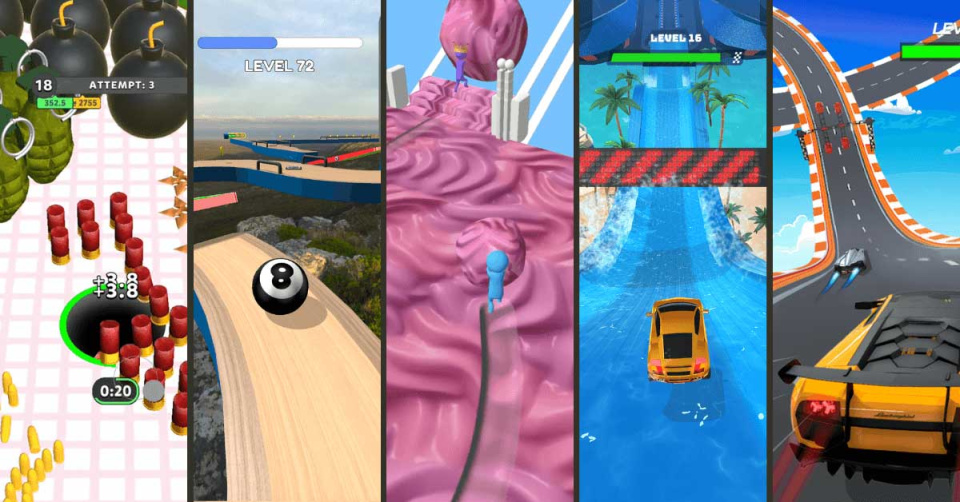
What is Game Environment Design?
In the gaming realm, the environmental design is the space where your game’s story unfolds. It goes beyond just game design, encompassing elements like writing, concept art, models, animations, renders, and more.
The scale of your games matters. Whether you’re a small company handling everything with a few mechanics or a big company with ample resources to hire professional artists, the dimension of your games plays a crucial role.
5 points in Game Design
Consider these details for your game environment design. Now that you’ve got the basics of environmental design, let’s explore further with five tips:
1. peak your style and aesthetic
Think about how you want your game to look. What mood do you want players to have? For a chill game like a puzzle or life simulation, go for simple, low-poly art with calm colors. But if you’re aiming for intense action, high-speed chases, and mystery, go for a realistic style with neon, cyberpunk aesthetics.
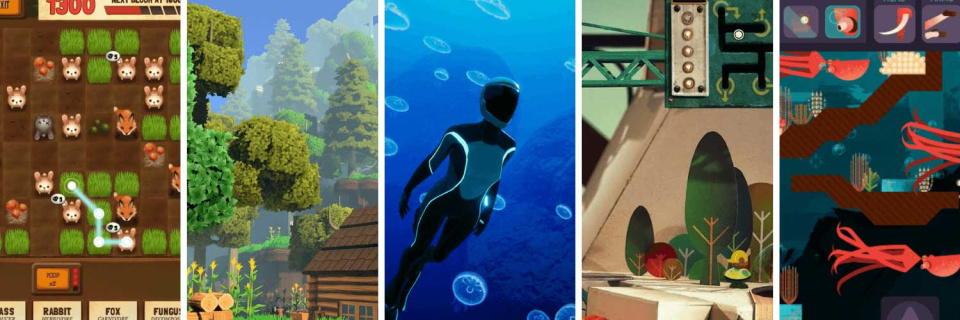
2. Choose the Right engine
The program you pick for making your game should fit your needs. Check the features and things you need, and look into what other creators and studios use.
It’s widely used in the industry and has lots of tools for creating super-realistic worlds.

3. Find sources that inspire you
It’s crucial to find good sources to know the genre’s history and what your audience expects.

4. Define your mood with lighting and color
Create memorable scenes and feelings by choosing the right lights and colors. In aesthetic, a dark and gritty mood is often shown with low light at night and bright neon colors (which usually guide the player). in your favorite movies, you’ll often see simple, one-color palettes. Every small detail adds up to build your world, bringing us to the last tip. Because it has a critical role I will elucidate more details in further paragraphs.
5. Attention to Detail
Keep in mind that you’re not just creating a world; you’re crafting an experience that players want to enjoy and move through. Your models and pictures should have enough detail for the immersion you seek, but it’s crucial to highlight key points. This way, players naturally find their way to their goals. Remember, your game art tells the story.
Styles of the environment in mobile games
Engaging Players Through Game Environments: Even if there’s nothing to do for a few seconds in the game, you still enjoy exploring the game arena, don’t you? That’s the game environment keeping you interested in discovering more and more.
Fantastic environments have a unique appeal. Even during those few seconds when there’s not much action, you still find joy in exploring the game world, right?
But have you ever wondered about the processes game developers go through to craft such immersive game environments? Well, you might have a rough idea, but let’s dive into exploring those answers together.
Players engage with mobile games’ compelling worlds through a variety of environment styles. In addition to affecting aesthetics and performance, the style chosen can also have a significant impact on the player experience. A few details regarding mobile game environments are listed below:
1. Low-Poly:
- Visual Style: Features simplified geometric shapes and fewer polygons.
- Performance: Enhanced performance on mobile devices due to lower computational requirements.
- Artistic Effect: Can provide a minimalist aesthetic that emphasizes gameplay over graphics.
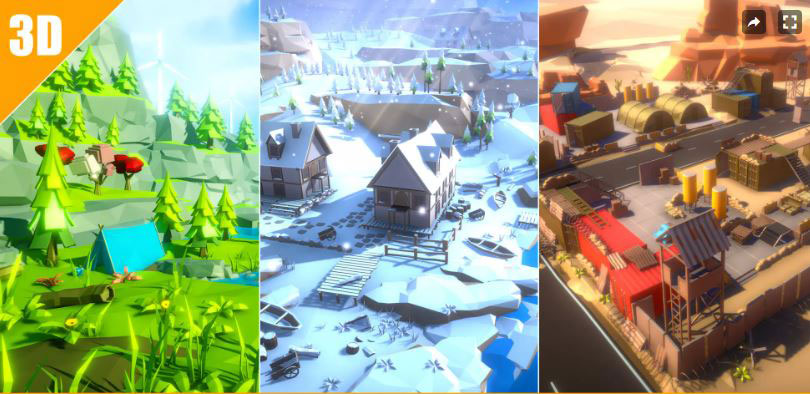
2. Pixel Art:
- Visual Style: Composed of pixelated images, reminiscent of early video games.
- Performance: Typically less demanding on the hardware, allowing for smooth performance on most devices.
- Artistic Effect: Evokes nostalgia and is often used in retro or indie game titles.
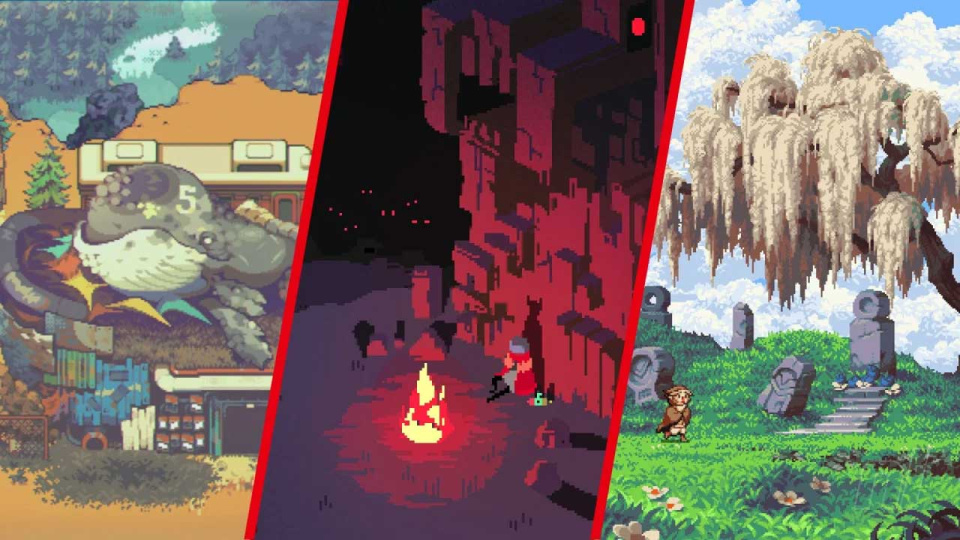
3. High-Poly / Realistic:
- Visual Style: Environments are highly detailed with a large number of polygons for a realistic appearance.
- Performance: Requires more powerful hardware and careful optimization to run smoothly on mobile.
- Artistic Effect: Creates immersive and realistic worlds, often seen in action or adventure games.

4. Isometric:
- Visual Style: Presents a three-dimensional environment in two dimensions using a fixed isometric perspective.
- Performance: Isometric games can vary in performance demands based on the level of detail.
- Artistic Effect: Provides a unique viewpoint that is particularly popular in strategy and simulation games.

5. Stylized / Hand-Painted:
- Visual Style: Artistic and often non-realistic with hand-painted textures.
- Performance: Texture quality and polygon counts will determine performance; however, these styles are often optimized for a variety of devices.
- Artistic Effect: Allows for a more expressive and unique presentation, often used in fantasy and story-driven games.
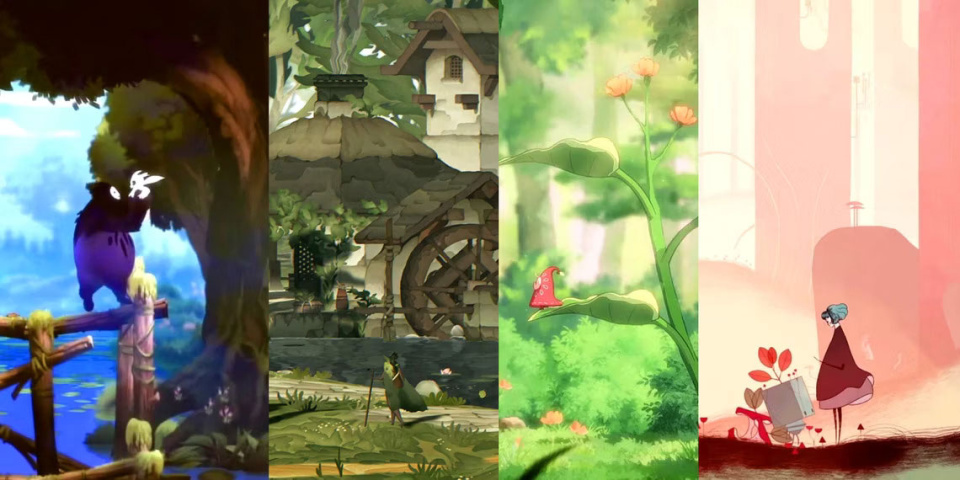
6. Voxel-Based:
- Visual Style: Constructed from 3D pixels or “voxels” (volumetric pixels), creating a blocky appearance.
- Performance: Voxel-based environments can be resource-intensive depending on the engine and optimization.
- Artistic Effect: Offers a distinctive look and can facilitate user-generated content, as seen in games like Minecraft.
7. Cel-Shaded:
- Visual Style: Uses bold outlines and flat colors to mimic the style of hand-drawn animation.
- Performance: Can be optimized for mobile use, depending on the complexity of the scenes.
- Artistic Effect: Often used in games that aim for a cartoonish or comic book-like appearance.

8. Augmented Reality (AR):
- Visual Style: Overlays digital content onto the real world through the device’s camera, creating interactive environments.
- Performance: This can be demanding due to the need to process live camera feeds and digital animations.
- Artistic Effect: Provides a cutting-edge gaming experience by blending the real world with virtual elements.
Depending on the environment style, different gameplay, narrative, and aesthetic goals are served. A game’s environment style depends on its target audience, mobile hardware limitations, thematic goals, and the overall user experience the developers intend to provide. Essential to all of these environmental styles is optimization to ensure that the game runs smoothly on a wide range of devices without draining battery life or causing overheating issues.
Importance of Lighting in Mobile Game Development: Key Principles
Lighting is a crucial component in mobile game development. Not only does lighting enhance the visual environment of a game. Most games are played on Android devices owing to the portability these fit-in-the-pocket devices come with. This makes it especially important to realize the need for emphasis on strategic game lighting techniques that ensure to reduce eye strain. Deciding about what amount of lighting to use can be especially daunting for a developer without much knowledge about the kind of device on which a player would play the game. If the gaming device is a low-end smartphone, this might lead to a lot of post-processing and bear implications on frame rates as well as energy usage of the gadget. Dynamic or real-time lighting are often solutions that can provide optimal lighting for mobile games and ensure a pleasant gaming experience.
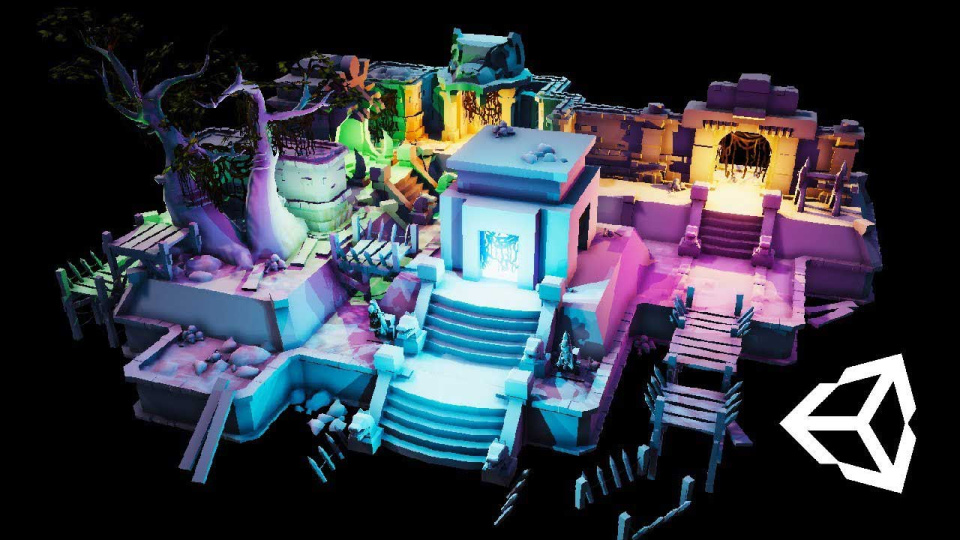
The cool connection between feelings and lighting gives game designers and mobile game creators an extra tool. They already have characters, stories, sound, and other things, but now they can use lighting too. A designer should know about brightness, sharpness, shadows, reflection, and contrast to make a game look special.
The Magic Power of Lighting in Mobile Games
Lighting is more than just brightening things up in games—it’s an art that brings scenes to life. Perfect lighting creates an attractive and immersive experience, adding an artistic touch to every moment. As a game developer, understanding the critical roles of lighting is essential. Here’s a glimpse into how it plays a pivotal role in shaping the overall game development and design experience.
Lighting matters in mobile game development
Lighting in games does a lot of important jobs. When it’s just right, it makes game scenes look super cool and beautiful. It’s like an art that adds a special touch to every scene. Lighting isn’t just about making things brighter; it’s a big deal that game developers shouldn’t ignore. Check out some key areas where lighting makes a big difference in the whole game development and design experience. Check out some important areas where lighting makes a big impact on the whole game development and design.
Check out some important areas where lighting makes a big impact on the whole game development and design:
1. Draws Attention
The right amount of light, shadows, and focus makes players really involved in the game. It also helps them pay attention to specific parts of the game environment—whether it’s to catch a reward or be alert to a possible obstacle or danger.
2. Adds Depth and Keeps You On Track
In a game, lighting creates depth based on where you are in the game. When specific parts light up, it helps you see objects better. The lighting isn’t just for making things visible; it’s about making the game feel super real and immersive like you’re in a lifelike environment.
3. Creates the Atmosphere:
Lighting is a big deal for setting the mood in a game. While it’s kind of like making a movie, games have their own special thing—interaction. The lighting has to match each game type. For example, a scary game needs lighting that gives you that creepy feeling while you’re playing with stuff in the game.
4. Adapts to Your Surroundings
Picture this: you’re playing your top game in bright daylight. Even after tweaking your phone’s display brightness, the in-game lighting isn’t quite right, and it’s not giving you the visual joy you want. That could drive players away. Now, imagine a game that’s smarter, adjusting its lighting to match the environment you’re in. That’s the magic of dynamic lighting in mobile video games.
Must-Knows for Lighting Your Game
Lighting is a big deal in game-making, but before you dive in, there are some key things to get a handle on. Check out these essential concepts to make sure you’re on solid ground in the world of lighting.
1. Playing with Colors and Brightness
Knowing your colors is key for setting the right vibes with lighting. Warm or cool, primary or secondary, each color plays a role in shaping a game’s mood. While red might usually mean danger, it doesn’t have to. Mixing and matching colors in unique ways can level up your game. Understanding how colors and lighting work together to create certain feelings is a big and fascinating topic to explore.
2. Balancing Colors
Building on the last point, getting the right balance of colors is super important too. Too many colors in the wrong mix can make everything look boring or too intense. We need to balance colors in a way that lighting them up doesn’t make things overly vibrant.
3. Know Your Audience
Colors and lighting shouldn’t be one-size-fits-all worldwide. Just like cultures vary, colors can mean different things in different places. So, it’s crucial to figure out who you’re making the game for. Understand your players’ backgrounds and then choose the right colors and lighting that make sense for them.
in n this article, we talked about making Hyper-casual Games more enjoyable for players. We shared tips on using camera perspectives from video games to create a fantastic experience for your audience.
The Science of Colors in Mobile Game Design
In mobile game design, the colors you choose can significantly impact a player’s experience. Their power lies in their ability to quickly catch the eye, and influence memory, mood, and decisions. Here’s why picking the right colors can be your game-changer.

Boost Competition with Red:
Games thrive on competition, and red is the color to amplify this. It’s more than just eye-catching—it can make your players more determined to win.
Improve Memory with Red and Yellow:
Need your players to remember something important? Use red or yellow! These colors are not just bright, they’re unforgettable, making them ideal for crucial game elements.
Spark Creativity with Blue:
Blue isn’t just calming—it’s also a creativity booster. Use it in puzzle games where you want players to think outside the box. It’s the color that nudges players to keep looking for solutions.
Keep Players Hooked:
Our brains love color. We’re wired to spot and recall colors like red and yellow much quicker than others, which makes them great for anything that needs instant attention in your game.
Signaling Right and Wrong:
Red often means stop or a warning—use it to signal players they’re making a mistake. It’s a universal language that instantly communicates when something is off.
Color as a Game Mechanic:
Some games literally bring worlds to life with color—taking a grey scene to vibrant as players progress is an excellent use of color.
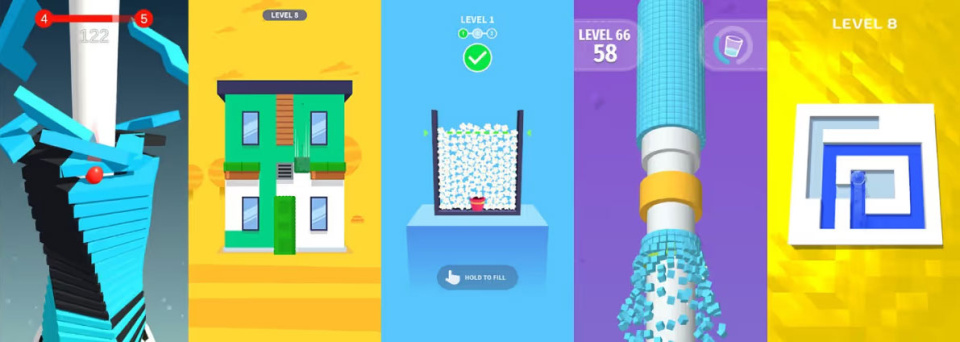
Managing Game Mood with Color:
Color can manipulate mood. While blue chills us out, red gets our blood pumping, and green can stir up a whole mix of feelings. orange and yellow intensify the feeling of hunger (as opposed to blue, which reduces it). Therefore, these colors work well, in games about cooking.
Incorporating these critical points can not only enhance your mobile game’s visual appeal but can also play an integral role in user experience and game mechanics.
Remember, the right color not only looks good but feels right to the player. Choose wisely and color your players’ experience with the thrill, calm, and joy that keeps them coming back for more.
Making Colors Better for Different Genres:
Adjusting the colors for each game type can make the visuals match the gameplay and story better, making players feel more involved and connected. Let’s dive deeper into how color palettes work in different game genres. We thoroughly talked about various types or categories.
Action and Adventure Games:
- Utilize dynamic colors like reds for explosions or critical gameplay elements to grab attention instantly.
Use earthy colors for natural scenes and metallic shades for weapons and machines. This adds a touch of reality to the vibrant look.
Horror and Survival Games:
- Use shadows a lot, and just add a bit of red for danger or blood to make it scarier.
- Use faded yellows or greens in dark scenes to make things look sick or old, which works well for post-apocalyptic places.
Fantasy and RPG Games:
- Use gentle colors like light purples, blues, or soft greens for magical glows.
- Put them against darker backgrounds to make the magic parts stand out.
- For special places, use warm colors like golds and reds to show power and importance.
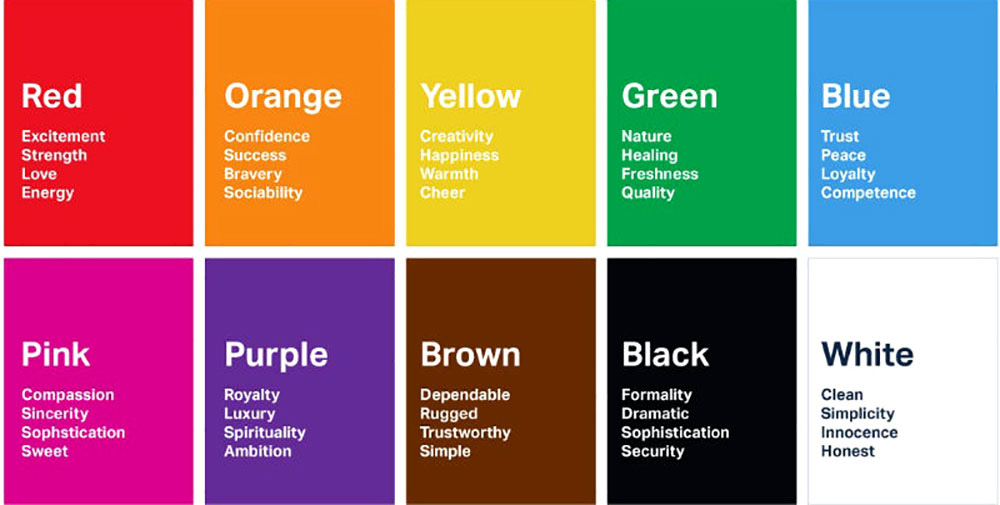
Sci-Fi and Cyberpunk Games:
- Mix bright neon colors with shiny surfaces and wet textures for a dirty, lived-in look.
- Gradients and glows can show high-tech or advanced areas in the game.
- Use gray colors, silvers, and chrome effects for advanced armor, robots, or city structures.
Casual and Puzzle Games:
- Use friendly colors like red, blue, and yellow that everyone likes, especially kids.
- The use of color coding for gameplay mechanics, helping with intuitive learning and recognizing patterns or progress within the game.
Simulation and Strategy Games:
- Use colors like actual green for plants, blue for the sky, and brown for the ground.
- For factions, resources, or territories, choose colors that look different but still go well together, so players can tell them apart easily.
Sports and Racing Games:
- Bold and dynamic colors, often associated with real-world sports kits or racing liveries, can be used to create associations with teams and manufacturers.
- Utilize contrasting colors for team allegiances and player identification on jerseys, banners, and markings.
Indie and Artistic Games:
- Often influenced by specific art styles (such as impressionism, surrealism, etc.) which can dictate a particular palette approach and color usage.
- Experiment with unusual combinations to create a signature look or to emphasize certain themes or narrative elements within the game.

When using these color improvements, it’s important to follow color rules for a nice and balanced look in the game. Also, think about options for color-blind players or high contrast for everyone. Remember that colors might mean different things in different places, affecting how the players feel. Try out different color combinations, and be ready to change them based on what players say and how the game design develops.
Conclusion:
The art of game environment design is a dynamic process that requires a deep understanding of aesthetics, technology, and player psychology. By implementing the principles discussed in this article and staying attuned to player feedback, game developers can create worlds that not only look visually stunning but also provide an unforgettable gaming experience. So, embark on your journey, experiment with styles, lighting, and colors, and craft game environments that leave a lasting impact on players’ memories.
